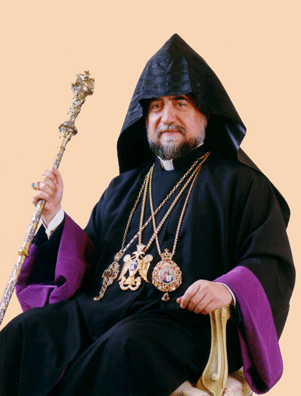I just returned from Porto Alegre, Brazil, where the World Council of
Churches (WCC) had its 9th Assembly. The gathering of four thousand
people (delegates, advisors, guests and journalists) was a landmark event in
world Christendom. Through prayer, celebration, reporting, discussion and
decisions, the Assembly set a new process in the life and witness of the WCC.
I am sure that church historians, theologians, ecumenists and journalists will
make a critical assessment of the Assembly. At a later stage, I would like to
make my own evaluation of this event by identifying its challenges and vision
for the future of the ecumenical movement.
the Assembly set a new process in the life and witness of the WCC.
I am sure that church historians, theologians, ecumenists and journalists will
make a critical assessment of the Assembly. At a later stage, I would like to
make my own evaluation of this event by identifying its challenges and vision
for the future of the ecumenical movement.
With this fourth dialogue with the youth of the Armenian Church, I want to share some information and my perspectives pertaining to the presence of youth delegates and their participation in the Assembly and discuss with you my expectations from our youth.
In my report to the Assembly, I challenged the youth to make the Assembly a “Youth Assembly”, not only by their strong presence but also by seeking the most efficient ways of making an impact. Further, I emphasized the crucial importance of the role that youth are impelled to play in the ecumenical movement, and called them to become the pioneers of a new ecumenical order, as well as the avant-garde of a new ecumenical future.
The response of the youth was positive. In fact, their commitment, participation and forward-looking vision permeated all aspects of the Assembly. In my dialogue with the youth, I reminded them that the dignity of service and not the arrogance of power must guide us, that we must look for substance and not for position, and we must be after quality and not after visibility.
This is what I have learned in this world-wide ecumenical movement and in my ministry. This is what I expect from our youth.
Now that the “Youth Assembly” is over, how can the youth make it an “Assembly for Youth” by translating its recommendations and vision into action-oriented process in the life of their churches and the ecumenical movement at large? This is the real challenge. I hope that the youth will take this challenge courageously and responsibly.
I was very pleased to see the young delegates of our church actively and seriously involved in all spheres of the life and work of the Assembly. The intervention particularly of our two young women delegates from Los Angeles and Boston in the plenary sessions made me proud. They reminded me of my first intervention as a young delegate at the 5th Assembly, in Nairobi, in 1975. The contribution, the zeal and the seriousness of our youth give me hope for the future of the ecumenical movement and the active ecumenical role of our church.
With this strong conviction and forward-looking perspective, I want to underscore a few points.-
1. Those who are taking part in the ecumenical movement are not necessarily clergy or theologians. They come from different walks of life and with different experiences. This diversity of age, gender and expertise constitutes one of the rich expressions of the ecumenical movement. Yet, for these people, basic information about Bible, church history, the confessional communions and church families, etc. is vitally important. This background information will significantly enhance the intellectual and spiritual dialogue between people, who come from different churches and from different parts of the world, seeking the unity of church and a common Christian witness.
2. For our youth, who want to engage in the ecumenical activities, the knowledge of the Armenian Church is essential. I say this because I know the limited scope of the information that our youth have about their church, its history and theology, liturgy and spirituality. Representing a church means representing its doctrinal positions, theological teachings, moral principles and spiritual values. The ecumenical movement is a space where not only people but also values, traditions, experiences come together and engage in creative and mutually enriching dialogue.
3. The ecumenical formation of our youth must become a continuous process. By ecumenical formation I do not mean only accumulation of information on ecumenical history, agenda, goals, priorities and structures, etc. By ecumenical formation I basically understand: a process whereby through the acquisition of knowledge a person is transformed and learns to look beyond the narrow boundaries of a particular church, to open up to the other churches, to different contexts and traditions, and to look at realities, issues and concerns in a broader context. Hence, ecumenical formation is a learning process.
4. Knowledge and formation are not enough if they are not undergirded by firm commitment. Fully equipped with the necessary tools, our youth must become active participants in the ecumenical movement. Ecumenism deals with vision. It has clear goals. Being ecumenical means being engaged in a faith-sustained and vision-driven life. Being ecumenical means being involved in struggle for the visible unity of the church and for the promotion of Gospel values.
5. Finally, ecumenism is a sort of school, where one always remains a student and never becomes a graduate, where one knows what and how to give and what and how to receive, when and how to talk and when and how to remain silent. Indeed, quality, commitment and vision count more in ecumenism than any other thing.
I invite the Armenian youth to engage in ecumenical life with this spirit, openness and vision.
Aram I
Catholicos of Cilicia






